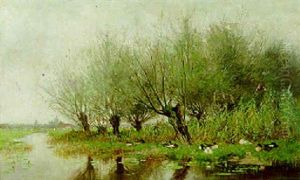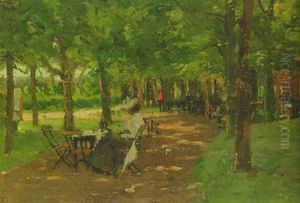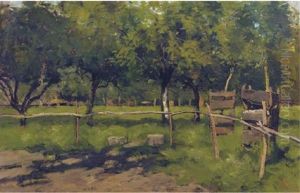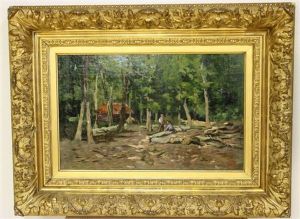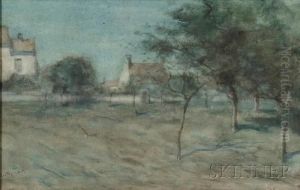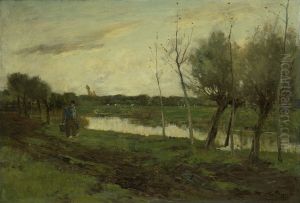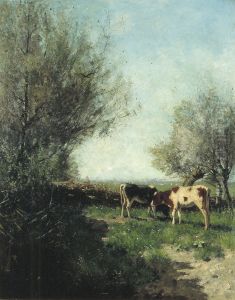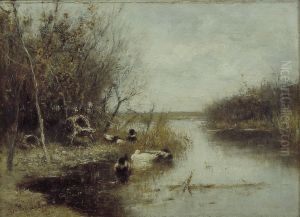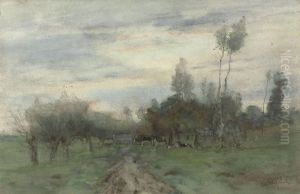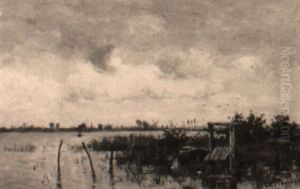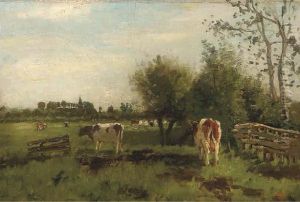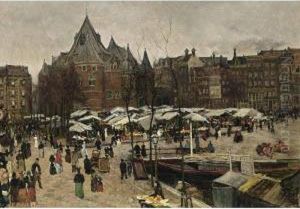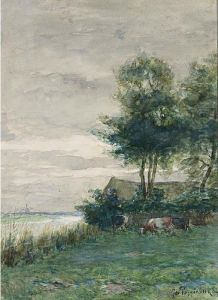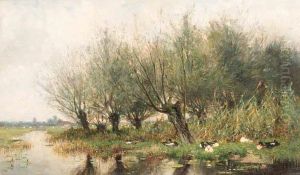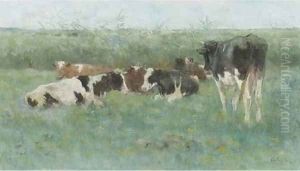Geo Poggenbeek Paintings
Geo Poggenbeek, born George Jan Hendrik Poggenbeek in Amsterdam, the Netherlands, in 1853, was a pivotal figure in the late 19th-century Dutch art scene. His contributions are often associated with the second generation of the Hague School, a group of artists who extended the tonalist and realist principles of their predecessors into the closing years of the century. Poggenbeek's work, characterized by a delicate sensitivity to light and atmosphere, holds a significant place in the development of Dutch landscape painting during this period.
Poggenbeek's early life was marked by an immersion in the arts, fostered by the vibrant cultural milieu of Amsterdam. However, detailed records of his early training are scant. It is known that he formed a close association with fellow artist Willem Witsen, and together, they played a crucial role in the Tachtigers movement, a group of artists and writers who sought to infuse Dutch art and literature with a new spirit of modernism.
Throughout his career, Poggenbeek was particularly drawn to the depiction of rural landscapes, waterways, and pastoral scenes. His approach was often compared to that of his contemporaries in the Hague School, emphasizing mood and the quality of light over detailed narrative content. However, Poggenbeek distinguished himself with a more vibrant palette and a slightly more impressionistic technique, which allowed him to capture the transient effects of light with remarkable subtlety.
Poggenbeek's work received considerable acclaim during his lifetime. He exhibited widely, both in the Netherlands and internationally, and his paintings were collected by art lovers and connoisseurs across Europe. Despite his success, Poggenbeek's life was not without challenges. Like many artists of his time, he struggled with financial instability and the perennial quest for artistic recognition.
Geo Poggenbeek's legacy is that of a masterful landscape painter who bridged the gap between the traditional realism of the Hague School and the emerging Impressionist movement. His ability to evoke mood and atmosphere through his exquisite handling of color and light has earned him a lasting place in the annals of Dutch art. Poggenbeek passed away in 1903, leaving behind a body of work that continues to be celebrated for its contribution to the evolution of landscape painting in the Netherlands.


